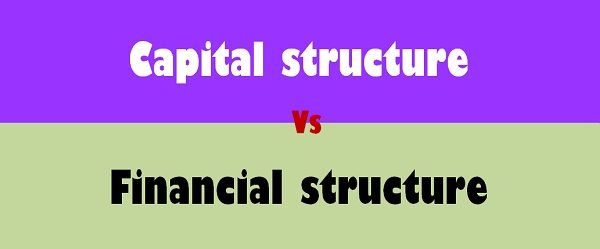 Funds are the basic need of every firm to fulfill long term and working capital requirement. Enterprise raises these funds from long term and short term sources. In this context, capital structure and financial structure are often used. Capital Structure covers only the long term sources of funds, whereas financial structure implies the way assets of the company are financed, i.e. it represents the whole liabilities side of the Position statement, i.e. Balance Sheet, which includes both long term and long term debt and current liabilities.
Funds are the basic need of every firm to fulfill long term and working capital requirement. Enterprise raises these funds from long term and short term sources. In this context, capital structure and financial structure are often used. Capital Structure covers only the long term sources of funds, whereas financial structure implies the way assets of the company are financed, i.e. it represents the whole liabilities side of the Position statement, i.e. Balance Sheet, which includes both long term and long term debt and current liabilities.
In other words, financial structure, is a broader concept than capital structure, or we can say that Capital Structure is a subdivision of Financial Structure. In this article, you will find all the substantial differences between capital structure and financial structure.
Content: Capital Structure Vs Financial Structure
Comparison Chart
| Basis for Comparison | Capital Structure | Financial Structure |
|---|---|---|
| Meaning | The combination of long term sources of funds, which are raised by the business is known as Capital Structure. | The combination of long term and short term financing represents the financial structure of the company. |
| Appear on Balance Sheet | Under the head Shareholders fund and Non-current liabilities. | The whole equities and liabilities side. |
| Includes | Equity capital, preference capital, retained earnings, debentures, long term borrowings etc. | Equity capital, preference capital, retained earnings, debentures, long term borrowings, account payable, short term borrowings etc. |
| One in another | The capital structure is a section of financial structure. | Financial structure includes capital structure. |
Definition of Capital Structure
The combination of long-term sources of funds, i.e. equity capital, preference capital, retained earnings and debentures in the firm’s capital is known as Capital Structure. It focuses on choosing such a proposal which will minimize the cost of capital and maximize the earnings per share. For this purpose a company can opt for the following capital structure mix:
- Equity capital only
- Preference capital only
- Debt only
- A mix of equity and debt capital.
- A mix of debt and preference capital.
- A mix of equity and preference capital.
- A mix of equity, preference and debt capital in different proportions.
There are certain factors which are referred while choosing the capital structure like, the pattern opted for capital structure should reduce the cost of capital and increase the returns, the capital structure mix should contain more of equity capital and less of debt to avoid the financial risk, it should provide liberty to the business and management to adapt itself according to the changes and so on.
Definition of Financial Structure
The mix of long term and short term funds employed by the company to procure the assets which are required for day to day business activities is known as Financial Structure. Trend Analysis and Ratio Analysis are the two tools used to analyze the financial structure of the company.
The composition of the financial structure represents the whole equity and liabilities side of the Balance Sheet, i.e. it includes equity capital, preference capital, retained earnings, debentures, short-term borrowings, account payable, deposits provisions, etc. The following factors are considered at the time of designing the financial structure:
- Leverage: Leverage can be both positive or negative, i.e. a modest rise in the EBIT will give a high rise to the EPS but simultaneously it increases the financial risk.
- Cost of Capital: The financial structure should focus on decreasing the cost of capital. Debt and preference share capital are cheaper sources of finance as compared to equity share capital.
- Control: The risk of loss and dilution of control of the company should be low.
- Flexibility: Any firm cannot survive if it has a rigid financial composition. So the financial structure should be such that when the business environment changes structure should also be adjusted to cope up with the expected or unexpected changes.
- Solvency: The financial structure should be such that there should be no risk of getting insolvent.
Key Differences Between Capital Structure and Financial Structure
The following are the major differences between capital structure and financial structure:
- The capital composition of the company which includes only long-term funds raised is known as Capital Structure. The combination of long term and short term funds utilized by the company for acquiring resources is known as the financial structure.
- Capital Structure appears under the head Shareholders Fund and Non-current liabilities. Conversely, the entire equity and liabilities side shows the financial structure of the company.
- Capital Structure is a section of Financial Structure.
- Capital Structure includes equity capital, preference capital, retained earnings, debentures, long-term borrowings, etc. On the other hand, Financial Structure includes shareholder’s fund, current and non-current liabilities of the company.
Conclusion
Capital Structure and Financial Structure are not contradictory to each other. Instead, they are inseparable. The optimum capital structure is when the company uses a mix of equity and debt financing that the value of the firm is maximized and side by side the cost of capital is also minimized.






Simret Mulugeta says
it is incredibly helpful to uplift my knowledge.
Thanks.